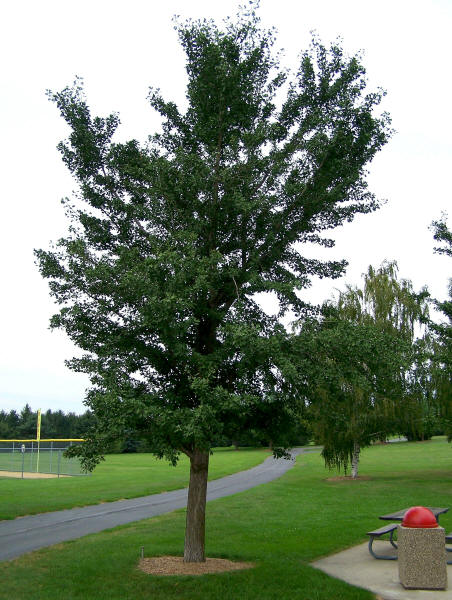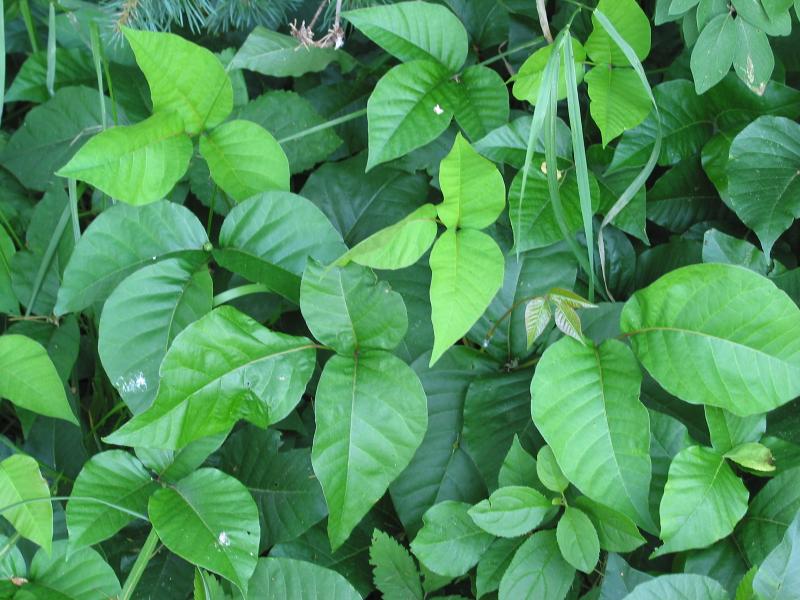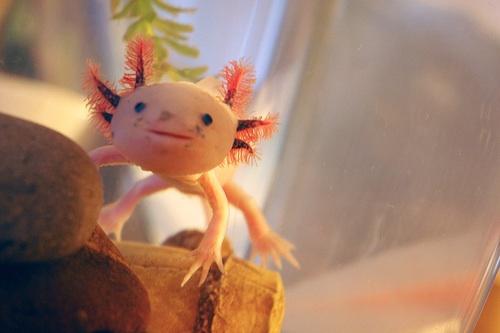Here is my final picture of my sunflower plants. I was given two seeds, both seeds sprouted and grew. They were first under a lamp in my room until they got to a point where i had to put them on my windowsill because they were too big. they were watered two times a week. One plant has grown to 18 inches, the other 10. The smaller one is in process of blooming right now and the larger one is about to start.
Tuesday, December 13, 2011
Population Life Tables
The tables below demonstrate the survival rate of humans throughout time. This table demonstrates the survival rate of a species over time. Humans tend to live a longer time and die off rapidly near 70 to 80 years. In contrast a type of tree such as an oak will have a quick die off period initially and only a few will survive the longrun.
As you can see most humans survive early on, once the time gets to about 80 years the line tapers off quickly.
As you can see most humans survive early on, once the time gets to about 80 years the line tapers off quickly.
Another interesting chart I discovered compares the population life tables of humans over a couple centuries. you can see the drastic effects of health and well being over the past couple hundred years.
Making bio-diesel and bio-ethanol
Bio diesel and bio ethanol are currently considered as the future of fuel for vehicles, other heavy machinery, and power in general. The process has many steps and is currently costly. The idea is to take used oil or to take corn or plant matter and break it down into diesel fuel or ethanol, depending on the material. Bio deisel requires the use of old grease or vegetable oils. below is a chart of the step required to make bio diesel.
This process, if streamlined, can drastically reduce the need for fossil fuels. Bio ethanol has a similar method but requires plant matter such as corn or reed. Below is a diagram of a typical bio ethanol plant.
Both of these method for producing alternative fuels are a good start to finding alternative energy. Bio ethanol runs into problems because it cuts into corn supply, which is a major food source for the whole world, which in turn has negative effects on the economy. It will be interesting to see where future of alternative fuels takes us.
Mitochondrial Eve
Mitochondrial DNA is a replication of the the DNA from the mother. All mitochondrial DNA comes from the mother is replicated and not changed. This means that the same DNA code has been passed down from mother to mother since when humans first walked the earth . Scientists estimate this woman lived from 150 to 200 thousand years ago.
Mitochondrial DNA only makes up .001% of our DNA, but it is the only DNA that is not in the nucleus. The mitochondria are the powerhouse of the cell. Any they are inherited from the mother.
Friday, December 9, 2011
Amphioxus
The amphioxus are members of the invertebrate subphylum Cephalochordata of the phylum Chordata. they are small, fish-like creatures. generally less that 3 inches in length. They are not particularly good swimmers though. Although they have no defined head and no eyes, they are closely related to vertebrates. They feed off of food particles in the water
They are generally found in the mud, sand, or gravel at the bottom of the ocean. They are found in access off the coast of China. They are also commercially fished. Below is a diagram of an amphioxus.

Macon Dog Park
For this lab we were supposed to go visit the dog park in Macon and take examples of the creek water to examine the bacteria content. Unfortunately, when we got halfway to the dog park it started raining so we turned around. We were told to discuss the dangers of bringing a young dog, or an unvaccinated dog to the park because of the ease of spread of disease. This holds true, unlike humans, who are in contact with multiple humans on a regular basis.
Dogs are not brought together often, with the exception of a dog park. this means that many new diseases, or fleas, are introduced to your dog every time you bring man's best friend to the park. Your dog (especially the youngest) doesn't have the immunity for all of the new diseases it is introduced to. Causing a health hazard for your dog.
Dogs are not brought together often, with the exception of a dog park. this means that many new diseases, or fleas, are introduced to your dog every time you bring man's best friend to the park. Your dog (especially the youngest) doesn't have the immunity for all of the new diseases it is introduced to. Causing a health hazard for your dog.
Darwin's Dilema
For one of our labs we watched a movie about Charles Darwin's struggle with Precambrian period fossil records. The Burgess shale, located in Canada, is an archaeologist, and paleontologist's playground. The layers in the shale demonstrate species evolution from all the way back to the Cambrian period.
Darwin's struggle is that, before the Cambrian period, there are no longer fossil records of life. The movie suggests that all life came to be in a matter of about two minutes. This, to me, seems to help further prove the fact that there is an intelligent creator although Evolution may have occurred and still be occurring.
This movie gave me evidence towards my beliefs. I respect Charles Darwin for his many contributions to the scientific community but at the same time I disagree with his view on the beginning (or creation) of life. His dilema in this movie only further proves my case. If he were alive today, It would have been interesting to talk to him to see his views.
Darwin's struggle is that, before the Cambrian period, there are no longer fossil records of life. The movie suggests that all life came to be in a matter of about two minutes. This, to me, seems to help further prove the fact that there is an intelligent creator although Evolution may have occurred and still be occurring.
This movie gave me evidence towards my beliefs. I respect Charles Darwin for his many contributions to the scientific community but at the same time I disagree with his view on the beginning (or creation) of life. His dilema in this movie only further proves my case. If he were alive today, It would have been interesting to talk to him to see his views.
Hitachi Experimental Forest
I really enjoyed this lab the most out of all the labs. For this lab we went to the experimental forest a couple miles north of Macon. The hike through the woods down to the river was not only a relaxting break from classes but also a learning experience about many different plants and about the controlled burning of forests to preserve them.
The pine beetle has been a large factor in the decreasing number of pine trees in the last decade. the controlled burning not only rids the area of pine beetles but also clears out the underbrush, allowing for more light to reach the forest floor and for other plants and animals to live. We walked all the way down to the river and spent a couple minutes at the edge of the river relaxing. Several different pictures were taken on this trip, unfortunately i don't have any of them so i don't have a picture for this post.
The pine beetle has been a large factor in the decreasing number of pine trees in the last decade. the controlled burning not only rids the area of pine beetles but also clears out the underbrush, allowing for more light to reach the forest floor and for other plants and animals to live. We walked all the way down to the river and spent a couple minutes at the edge of the river relaxing. Several different pictures were taken on this trip, unfortunately i don't have any of them so i don't have a picture for this post.
Jackson Springs
For this lab we crossed the Ocmulgee and went to Jackson springs park. We were given chisels and hammers to break off rock samples to evaluate and classify them. Among some of the rock samples found were both regular and rose quartz, granite, and feldspar. Also we saw the line on the road bridge across the river where the river waters from the flood rose too.
After the walk to the river, we filtered sand and dirt from the bottom of the creek to find small samples of inorganic and organic materials. Below is a picture of the creek and the tunnel under the road.
After the walk to the river, we filtered sand and dirt from the bottom of the creek to find small samples of inorganic and organic materials. Below is a picture of the creek and the tunnel under the road.
Saturday, November 26, 2011
Lake Peigneur
I chose this lake as my favorite lake because it is the only lake in the world that went from being an 11 foot deep fresh water lake to a 1300 foot deep salt water lake in a matter of days. The lake had several oil rigs on it, one of the oil rigs hit a salt mine that was way below the lake, causeing all the water to drain in a whirlpool out of the lake. the passage that the water was traveling down made by the drill was quickly eroded into a larger channel because the water disolved the salt away almost instantly. The vortex sucked up other oil rigs on the lake and everything on the lake. Becuase the lake drained so quickly it caused the canal from the lake to the ocean to reverse its direction and it filled the deep eroded crater left behind with salt water from the ocean. This process completely changed the ecosystem of the entire lake in a matter of hours. EVery living thing in the lake was quickly replaced. Also the lake was made much deeper, making for greater temperature change from the surface to the lake floor.
LAKE PEIGNEUR ARTICLE
LAKE PEIGNEUR ARTICLE
Friday, November 25, 2011
Negative Feedback Loops
For negative feedback loops, I decided to elaborate using terminology and illustrations from a
feedback and systems class I took last semester. Consider the diagram shown below.
G represents a function or system operator of a medium "R". "H" represents a negative feedback
operator that sends information back to the source through route "B", then subtracts from "R"
to create "E". "H" must be negative or else the system will rapidly become unstable and will
explode and or collapse. An example of this could be population of a certain species "R". As
population "G" increases, it will forever increase without a negative feedback function from "H"
such as widespread disease or insufficient food sources. this negative feedback function
causes the population to drop back to a lower level because it subtracts population from "R" to
create "E" where the system becomes more stable. The population will continue to settle until it
reaches a stable level.
feedback and systems class I took last semester. Consider the diagram shown below.
G represents a function or system operator of a medium "R". "H" represents a negative feedback
operator that sends information back to the source through route "B", then subtracts from "R"
to create "E". "H" must be negative or else the system will rapidly become unstable and will
explode and or collapse. An example of this could be population of a certain species "R". As
population "G" increases, it will forever increase without a negative feedback function from "H"
such as widespread disease or insufficient food sources. this negative feedback function
causes the population to drop back to a lower level because it subtracts population from "R" to
create "E" where the system becomes more stable. The population will continue to settle until it
reaches a stable level.
Thursday, October 13, 2011
Indian Mounds Lab
This lab was fun because we got to take a field trip to the indian mounds and see where the ancient people used to live. Macon is and was a prime spot for trade due to the ocmulgee river, making it a good place for early people to live. We walked through the woods and discussed the different layers of the forest floor due to decomposition and looked at a creek that had eroded away multiple layers of soil showing many different sol types.
Below are some pictures of the views from on top of the temple mound.
Below are some pictures of the views from on top of the temple mound.
Blood Glucose Levels
The following chart represents the blood glucose levels over a 45 minute period after someone eats a snickers bar.
12 Soil Types
For one of our labs, we went across the street from Mercer and dug into the groud to observe the different types of soil. There are 12 different soil orders in the world and below is a chart that shows where the 12 different orders are generally located.
One interesting soil order is called the vertisols, it is a clayey soil that has the capacity to absorb alot of water. this soil is usually found at the bottom of a lake. and when the lake is dry, it is usually the cracked soil at the lakebed.
One interesting soil order is called the vertisols, it is a clayey soil that has the capacity to absorb alot of water. this soil is usually found at the bottom of a lake. and when the lake is dry, it is usually the cracked soil at the lakebed.
Thursday, October 6, 2011
LAB #2 Ocmulgee River lab
In this lab we split into different groups to do a variety of different things. Our group was responsible for counting the number of live clams in multiple different locations across he river with a shovel and a filter. We found that the majority of the clams were in shallower water with a slow current. Almost no clams were found in the fast current and deeper waters.
Tuesday, October 4, 2011
Monday, September 26, 2011
LAB 2
In this lab, the class identified several different types of plants on mercer campus. The following are some of the plants seen on campus.
Ginkgo biloba
Japanese Privet
Birch Tree
Holly Ilex
Poison Ivy
Wednesday, September 7, 2011
LAB 1 "MAPS.2"
This is my happy place,it's slightly less than a mile walk from my house. Here is a bamboo forest right on the bend of the Chattahoochee river where you can go fishing or just sit and relax.
LAB 1 "MAPS"
For my first map, I chose the isarithmic map shown directly below. This map shows the Average annual precipitation in Georgia by breaking areas into different zones using point source data.
For my second map, I chose a dot density map that portrays the magnitude of multiple units across a map. the map i chose was the nuimber of internet users across the world in 2004.
For my third map, I chose to find a chloropleth map displaying populations of all the different states in the United States of America. The darkness of the color represents a greater magnitude of the selected zone.
Tuesday, September 6, 2011
The Axolotl
The Axolotl ,(Ambystoma mexicanum), is an amphibian found natively in lakes in Mexico. It undergoes metamorphosis to become an aquatic adult with gills, it grows to be between a half to one and a half feet long. It is in the salamander family. currently it is undergoing extensive research because of its innate ability to regenerate its own appendages in a matter of months. It can also accept transplants with great ease, including parts of its brain. The axolotl is currently on the endangered species list due to pollution from urbanization.
Subscribe to:
Comments (Atom)

























